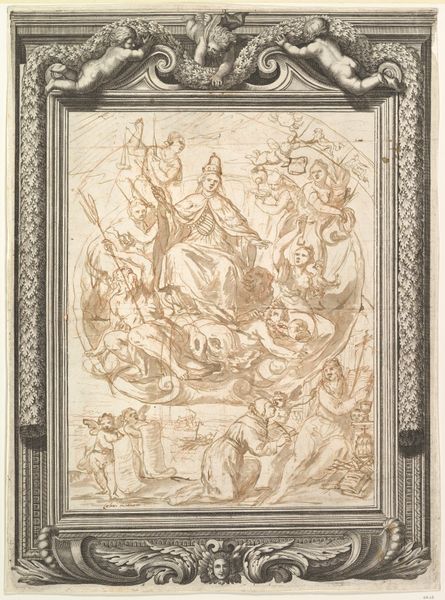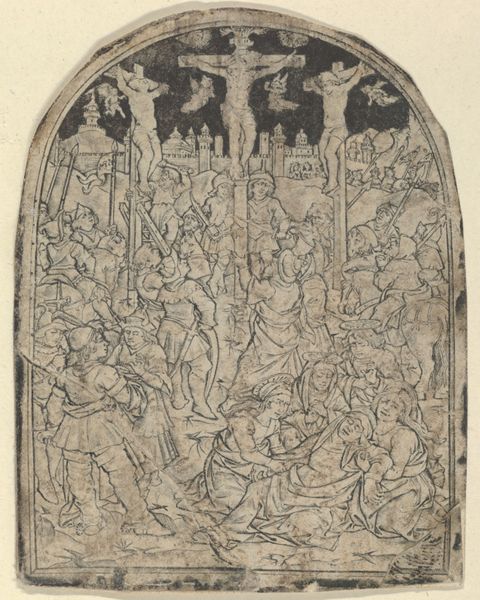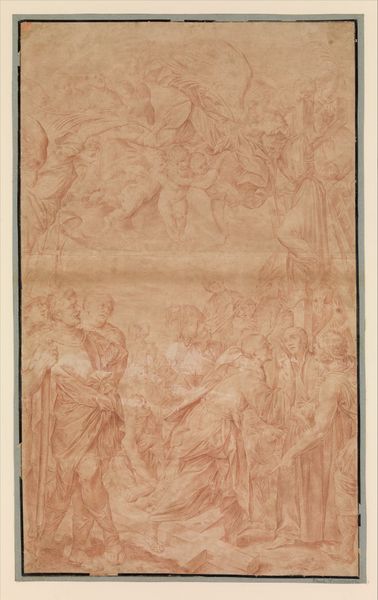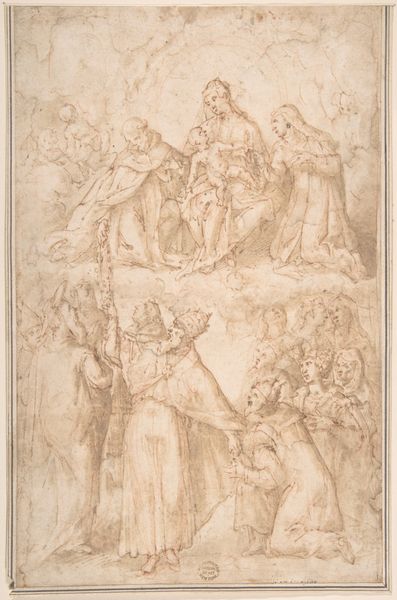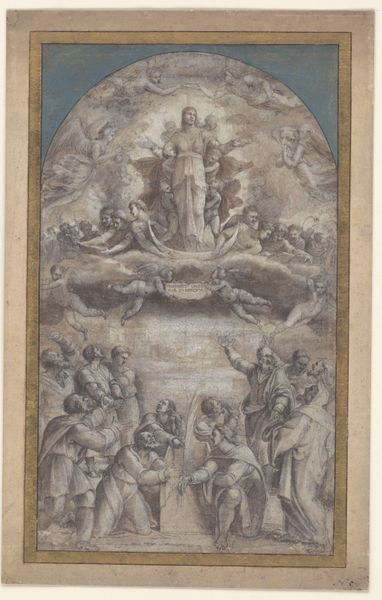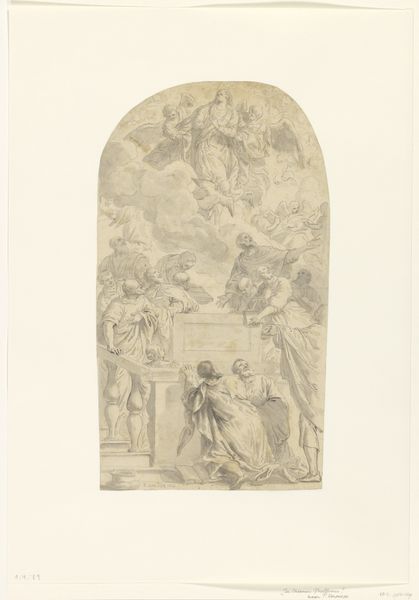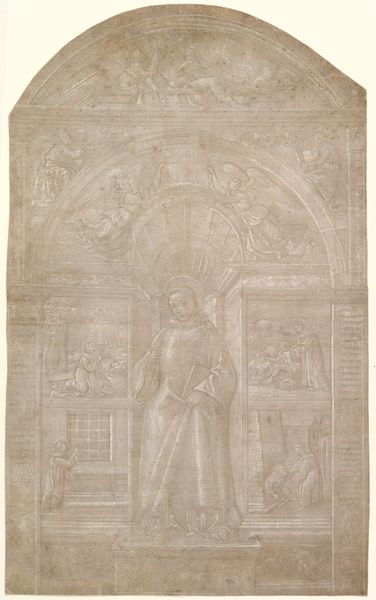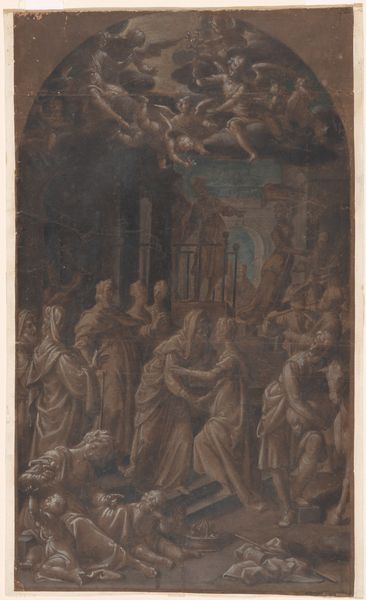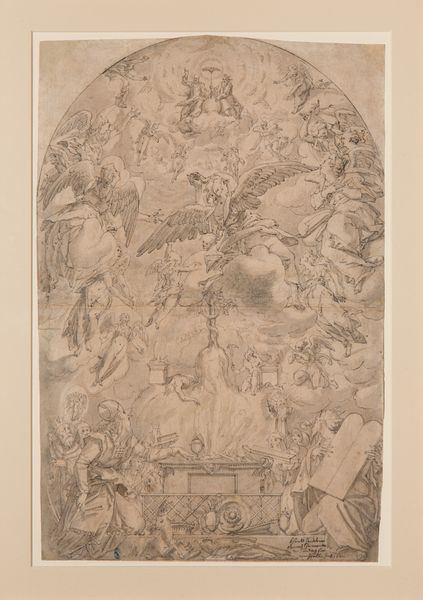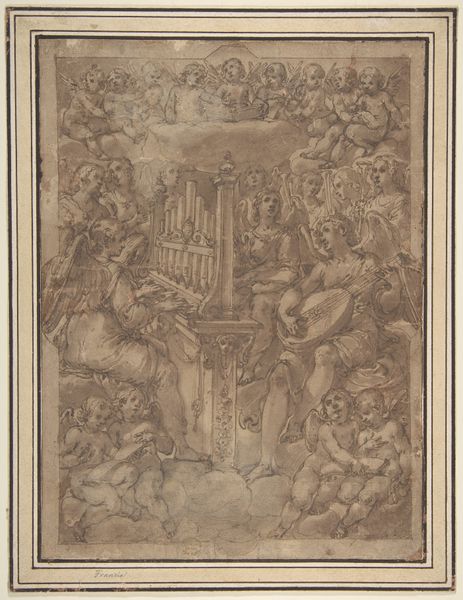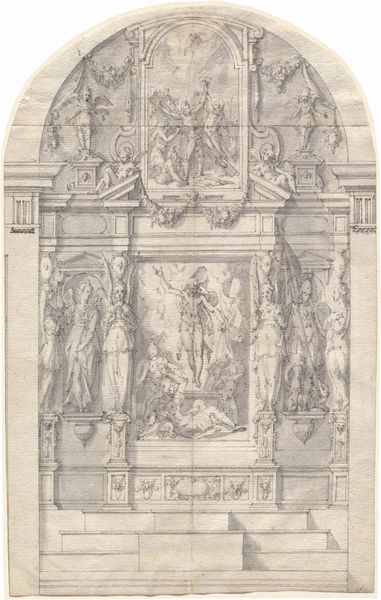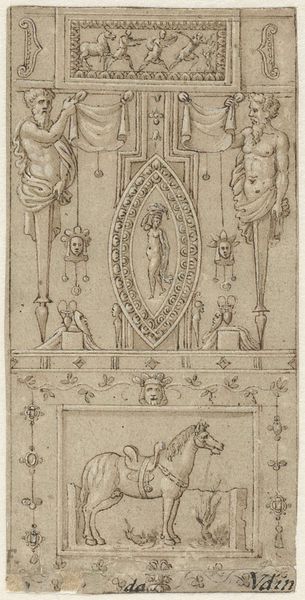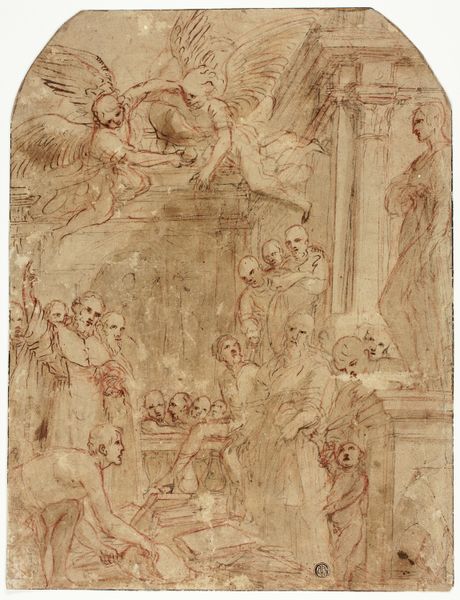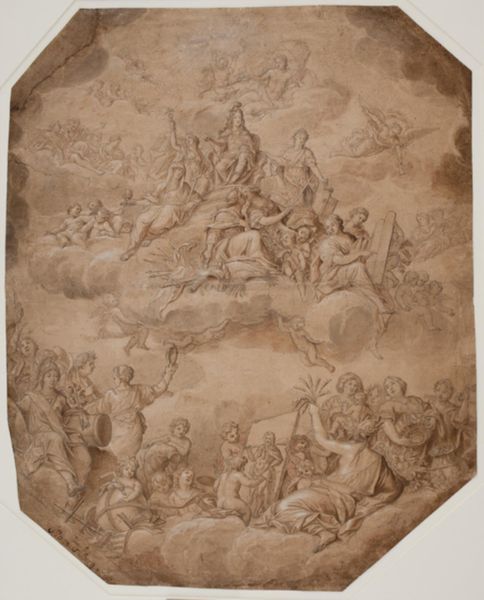
drawing, paper, charcoal
#
drawing
#
narrative-art
#
sculpture
#
charcoal drawing
#
figuration
#
paper
#
11_renaissance
#
charcoal art
#
charcoal
#
history-painting
#
northern-renaissance
Dimensions: height 246 mm, width 174 mm
Copyright: Rijks Museum: Open Domain
Editor: Here we have "The Meeting of Abraham and Melchizedek" by Jan Geritsz. Deys, a charcoal drawing on paper dating from 1551 to 1561. The composition feels quite dense, packed with figures, and it's prompting me to think about themes of power, tribute, and religious authority. How do you interpret this work? Curator: This drawing gives us a lens through which to examine the complex relationship between religious doctrine and social structures of the 16th century. How does the artist portray the act of giving, receiving, and witnessing within the context of religious authority? Notice the details of costume and how those might relate to societal hierarchy at that time. How do they influence our understanding of the depicted scene? Editor: It seems the artist is carefully considering how these historical figures would have been presented, based on existing beliefs of the period, but the way you frame it makes me question how *accurate* the presentation would have been? Curator: Exactly. Think about how the artist utilizes this biblical narrative to perhaps subtly endorse, or even critique, specific aspects of societal power. Consider who is being highlighted and in what context. Does the artist subtly support particular roles, traditions, or power dynamics? Are certain gestures or symbolisms politically pointed? Editor: So, it's less about a straightforward retelling and more about using a historical narrative to speak to contemporary issues of power. I see it now! Curator: Precisely. By carefully examining elements like these, we can start to unpack how historical narratives in art intersect with the politics and societal issues of the time. It allows us a glimpse of cultural complexities we wouldn’t be able to examine otherwise. Editor: Thanks. Now I am eager to explore what other contemporary sociopolitical considerations Deys embedded into his work!
Comments
No comments
Be the first to comment and join the conversation on the ultimate creative platform.
